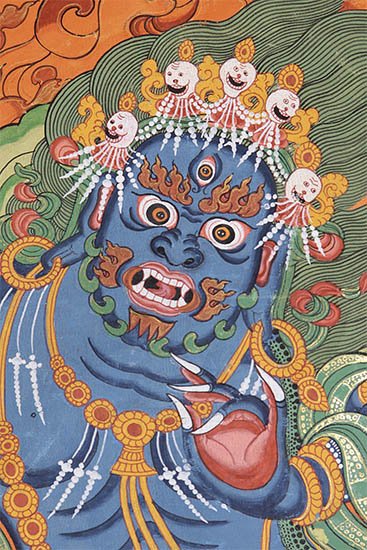Pancarekha, Pañcarekhā, Pancan-rekha: 1 definition
Introduction:
Pancarekha means something in Buddhism, Pali. If you want to know the exact meaning, history, etymology or English translation of this term then check out the descriptions on this page. Add your comment or reference to a book if you want to contribute to this summary article.
Alternative spellings of this word include Pancharekha.
In Buddhism
Tibetan Buddhism (Vajrayana or tantric Buddhism)
Source: MDPI Books: The Ocean of HeroesPañcarekhā (पञ्चरेखा) refers to “five lines” (representing the Fivefold Gnosis), according to the 10th-century Ḍākārṇava-tantra: one of the last Tibetan Tantric scriptures belonging to the Buddhist Saṃvara tradition consisting of 51 chapters.—Accordingly: [while explaining the body circle (kāyacakra)]: “[Every Yoginī] has the nature of wisdom and means, dwells in the upapīlava (“near the village border”) [holy site], and is [of] the Level of the Practice of Resolution. These are the twelve circle [deities]. Square [in shape], this circle has the name of the Emanation Body, [is decorated with] five lines (pañcarekhā) [representing the Fivefold Gnosis] starting with the Mirror-like, and is marked with every [kind of good] characteristic. Sixteen [offerings] are performed by goddesses—[this is] the offering to the four layers [...]”.

Tibetan Buddhism includes schools such as Nyingma, Kadampa, Kagyu and Gelug. Their primary canon of literature is divided in two broad categories: The Kangyur, which consists of Buddha’s words, and the Tengyur, which includes commentaries from various sources. Esotericism and tantra techniques (vajrayāna) are collected indepently.
See also (Relevant definitions)
Partial matches: Rekha, Panca.
Full-text: Hayagriva.
Relevant text
No search results for Pancarekha, Pañcarekhā, Pancan-rekha, Pañcan-rekhā, Panca-rekha, Pañca-rekhā, Pañcarekha, Pañca-rekha, Pañcan-rekha; (plurals include: Pancarekhas, Pañcarekhās, rekhas, rekhās, Pañcarekhas) in any book or story.